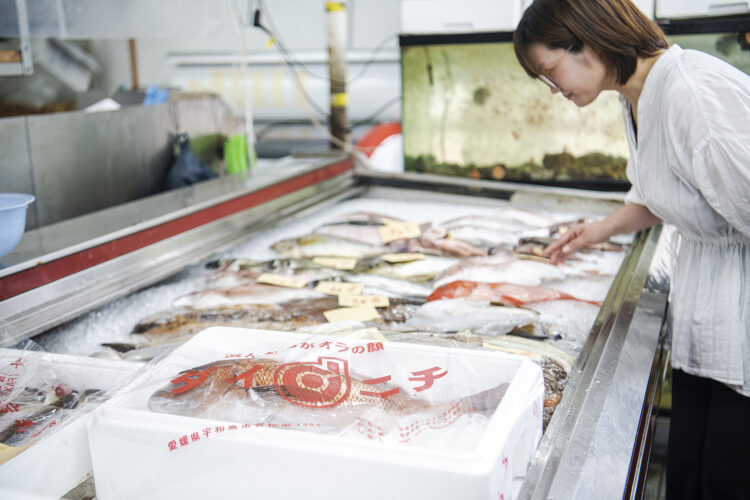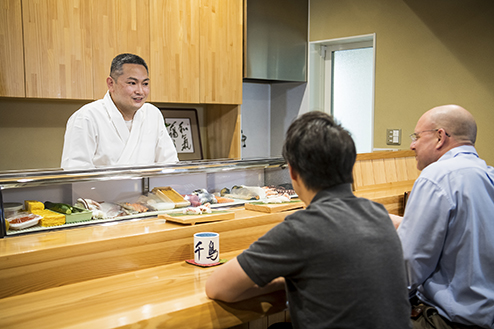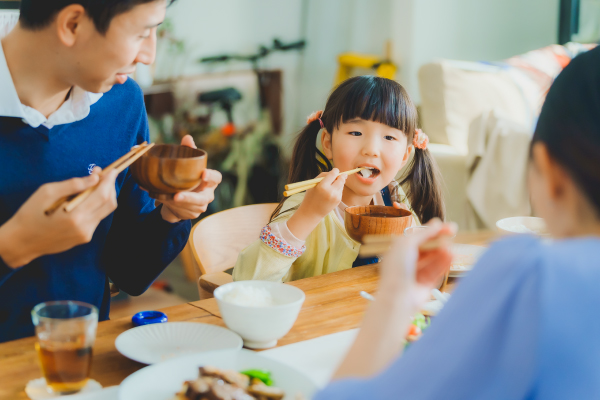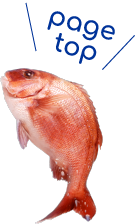To General Consumers
Operating under the corporate philosophy of Making People Happy with Fish, we deliver delicious fish to the world’s tables.
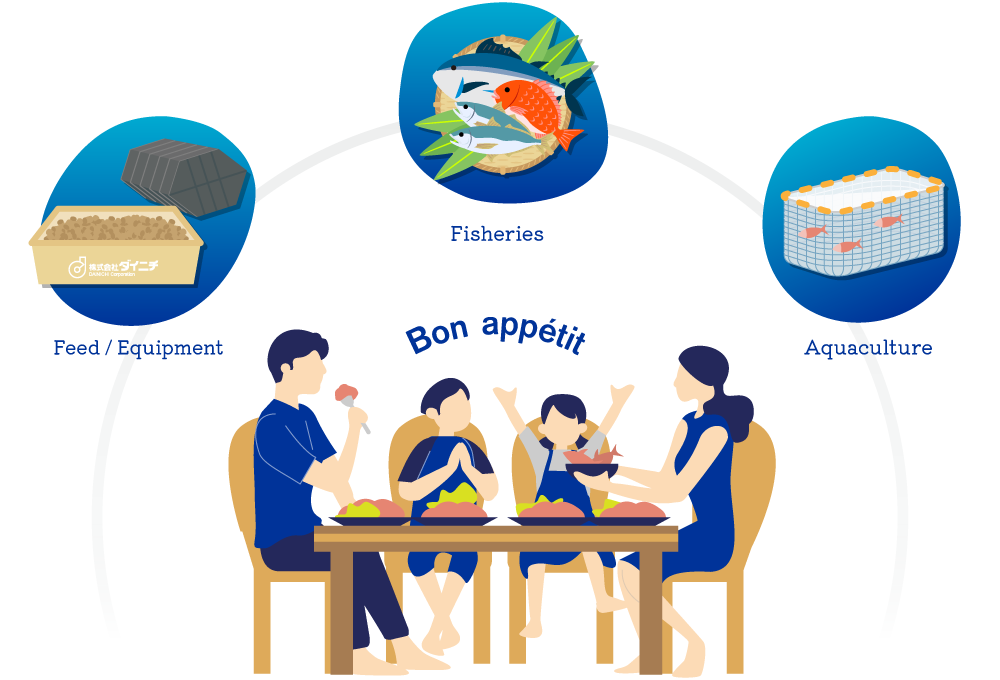
DAINICHI’S FISH
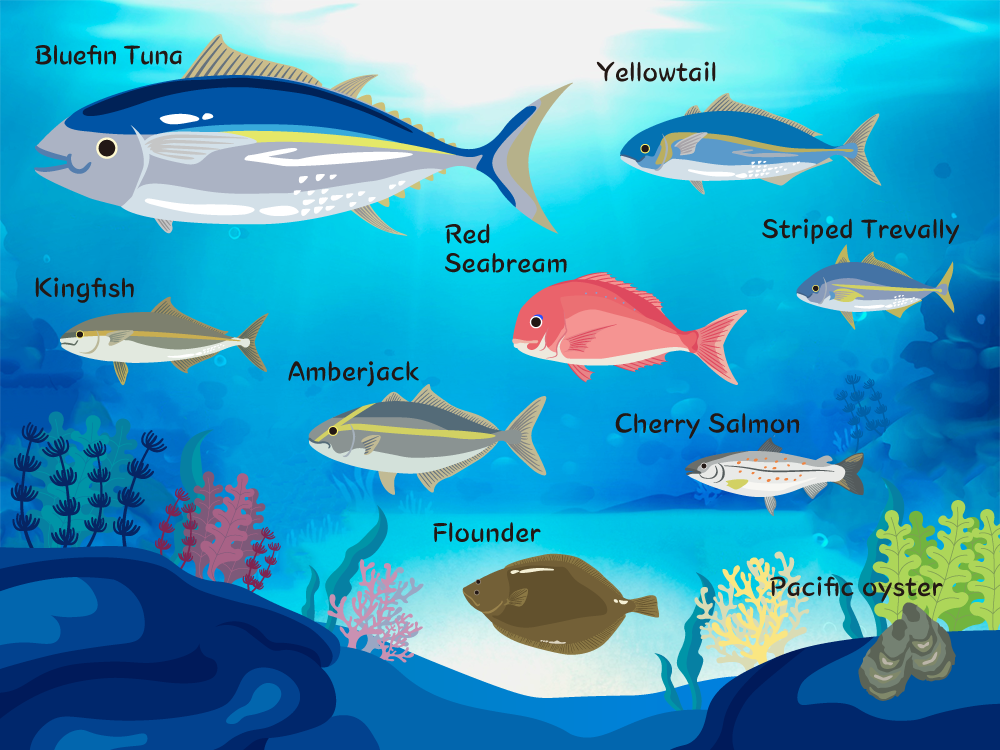
SPECIES
MADAI
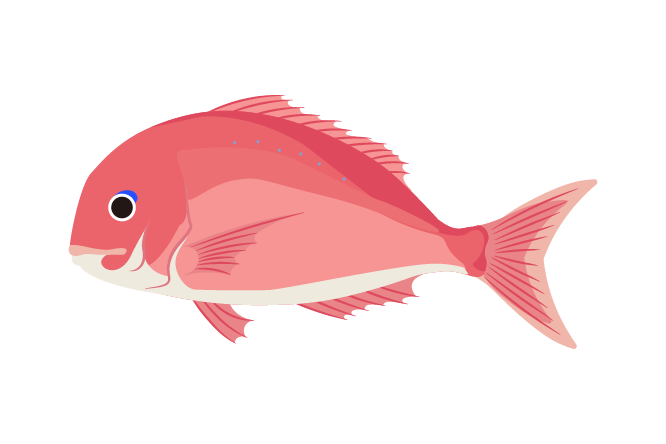
【Japanese】Madai
【English】Red seabream
【Scientific】Pagrus major
Season: MAR – JUN (Spring)
Selection Criteria: Choose a fish with a firm body, elasticity, and bright color with distinct blue spots.
Recommended Dishes: Satsuma Gohan (grilled bream mixed with barley miso served with dashi soup over hot rice), Uwajima Tai Meshi (sea bream sashimi mixed with raw egg over rice), Arayaki (simmered sea bream in a broth of soy sauce and sake)
――――――――――――――――
Sea bream have rigid fins that can damage others when swimming, therefore each fish is placed in special partitioned box when it is tranported to the market. As Japan’s leading producer of red sea bream, only Ehime can transport live sea bream in such a careful manner.
HAMACHI
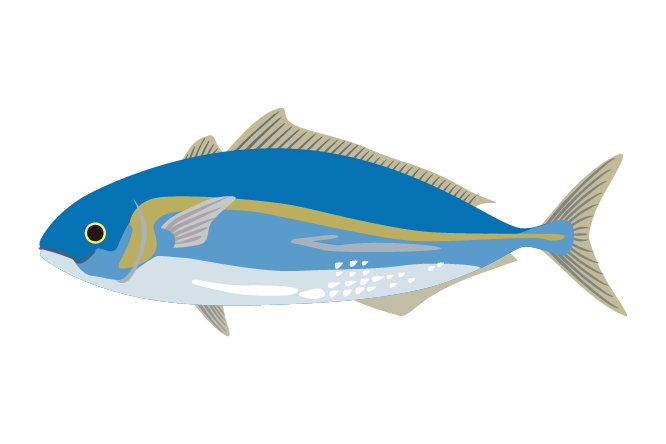
【Japanese】Hamachi
【English】Yellowtail
【Scientific】Seriola quinqueradiata
Season: DEC thru JAN (Winter)
Selection Criteria: Choose a fish that’s shape is well-rounded with bright red gills.
Recommended Dishes: Buri Shabu (quickly simmered yellowtail slices), Buri Daikon (simmered yellowtail with daikon radish), Mako no Nituke (simmered yellowtail roe)
――――――――――――――――
Hamachi is a species that is unique to Japan and very popular overseas.
KAMPACHI
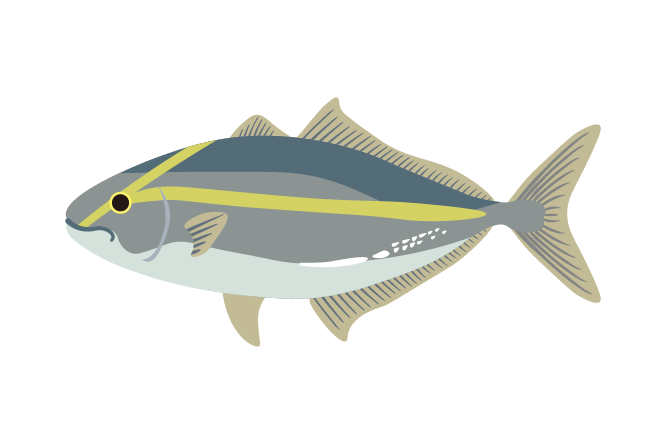
【Japanese】Kampachi
【English】Amberjack
【Scientific】Seriola dumerili
Season: JUN thru SEP (Summer)
Selection Criteria: Choose a fish that’s shape is well-rounded with bright red gills.
Recommended Dishes: Sashimi, Nanbanzuke (fried marinated amberjack)
――――――――――――――――
Kampachi prefer warmer waters, with migratory behavior like bonito. Their habitat can vary from to rocky reefs to deep-sea areas.
SHIMAAJI
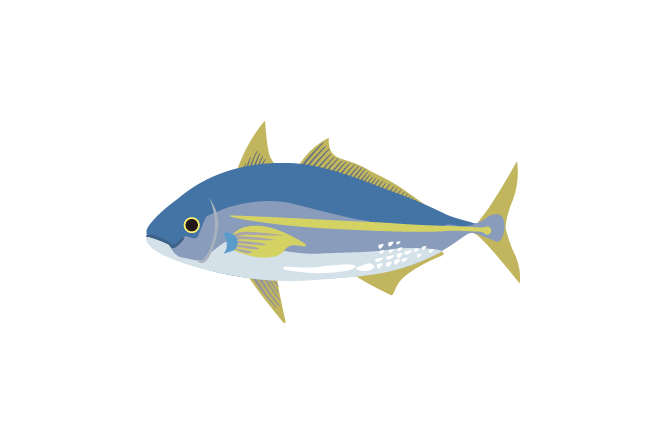
【Japanese】Shimaaji
【English】Striped Jack
【Scientific】Pseudocaranx dentex
Season: JUN thru SEP (Summer)
Selection Criteria: Choose a fish with vibrant skin, firm flesh, and clear eyes.
Recommended Dishes: Sashimi, Chawanmushi (savory egg custard with seafood)
――――――――――――――――
Ehime Prefecture is the top producer of this luxury fish. It makes a squeaking sound when caught, which is why it is sometimes referred to a ‘squeaker’ by the locals. Shimaaji’s body temperature is very low. You can burn the fish by touching it with your bare hands.
HIRAME
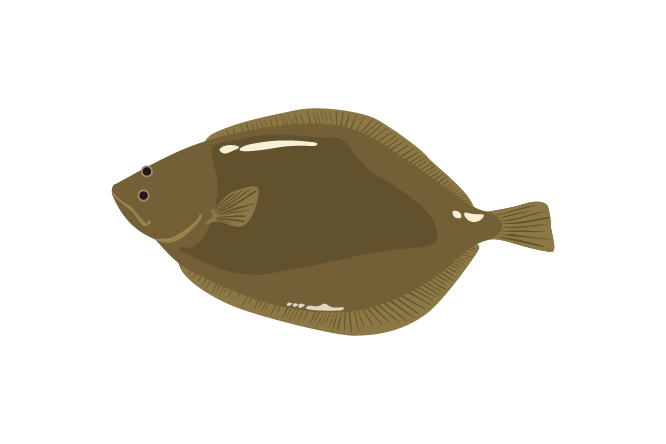
【Japanese】Hirame
【English】Olive flounder
【Scientific】Paralichthys olivaceus
Season: NOV thru FEB (Winter)
How to Choose: Please choose a fish with a translucent amber color and elasticity.
Recommended dishes: Kombu-jime (a traditional means of preservation. fresh sashimi is sandwiched between kombu seaweed which absorbs the fish’s moisture and enhances umami) , simmered dishes
――――――――――――――――
Left-eye Hirame, right-eye Karei, the Hirame’s eyes are located on the left side when you look at the fish from behind with the stomach is facing forward. Hirame is considered a high-quality fish, while Karei is considered to be a cheap fish for the masses.
HIRAMASA
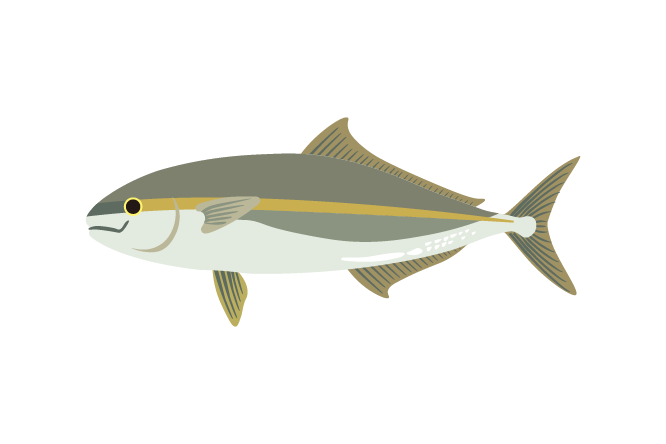
【Japanese】Hiramasa
【English】King fish
【Scientific】Seriola lalandi
Season: MAY thru JUL (Summer)
Selection Criteria: Choose a fish firm and elastic flesh and vibrant gills.
Recommended Dishes: Sashimi, Mirin-boshi (dried fish marinated in mirin)
――――――――――――――――
Hiramasa’s taste will gradually change from the moment it is prepared. Pay attention to the aging process and try tasting it to compare the flavors.
KURO MAGURO
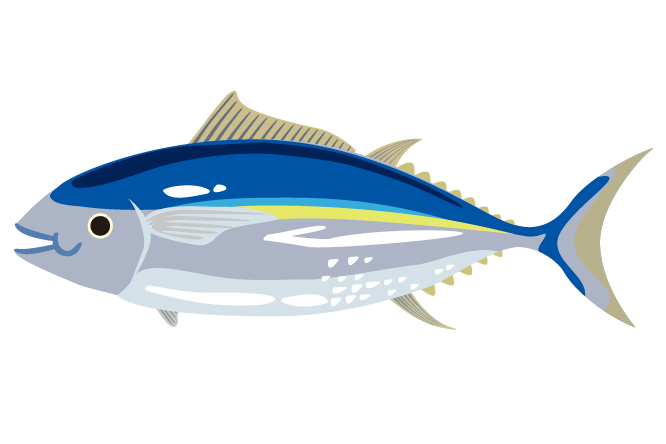
【Japanese】Kuromaguro
【English】Bluefin Tuna
【Scientific】Thunnus orientalis
Season: DEC thru FEB (Winter)
Selection Criteria: Choose a firm fish with minimal drip and vibrant red-colored flesh.
Recommended Dishes: Sashimi
――――――――――――――――
Only while alive do blue lines appear on their bodies. At the time of harvest, tuna have a body temperature of nearly 60C! Therefore, they must be quickly handled quickly to deliver delicious bluefin tuna to your table.
SATSUKI MASU
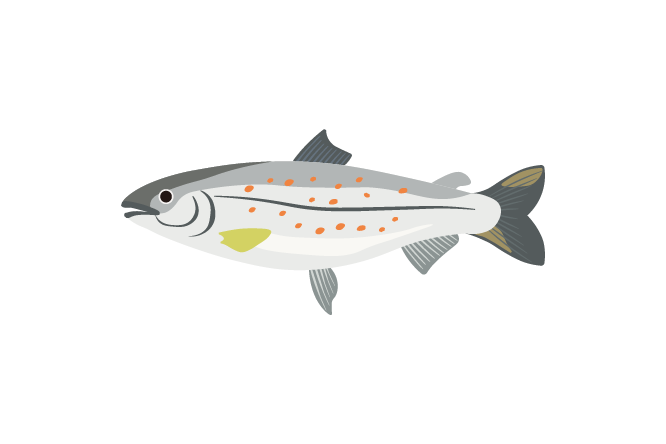
【Japanese】Satsuki Masu
【English】Cherry Salmon
【Scientific】Onocorhynchus masou
Season: APR thru MAY (Spring)
Selection Criteria: Choose a long well-rounded fish with a slimy body.
Recommended Dishes: Sashimi, Meunière
――――――――――――――――
It is unique species native to Japan, originally found only in specific areas of western Japan. This rare fish does not grow easily and is difficult to cultivate. Its body surface changes to a silver color, and the flesh is a beautiful salmon pink.
KAKI
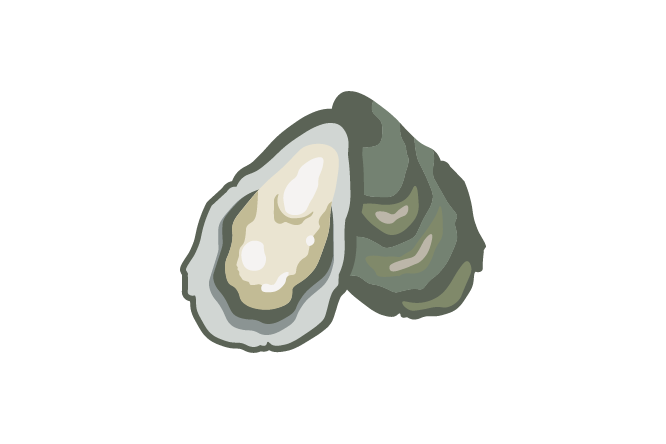
【Japanese】Magaki
【English】Pacific oyster
【Scientific】Crassostrea gigas
Season: DEC thru FEB (Winter)
Selection Criteria: Look for plump oysters with firm flesh clear liquid inside the shell.
Recommended Dishes: Sashimi, Steamed, Fried Oysters
――――――――――――――――
Oysters are biofilters that purify 24-96 liters of seawater per day.
Previously it was thought that oysters should not be eaten during months without an “R”, but recently triploids (sterile due to having three times the normal number of chromosones) are widespread allowing oysters to be enjoyed year-round.
UNTIL IT REACHES YOUR TABLE
Until It Reaches Your Table
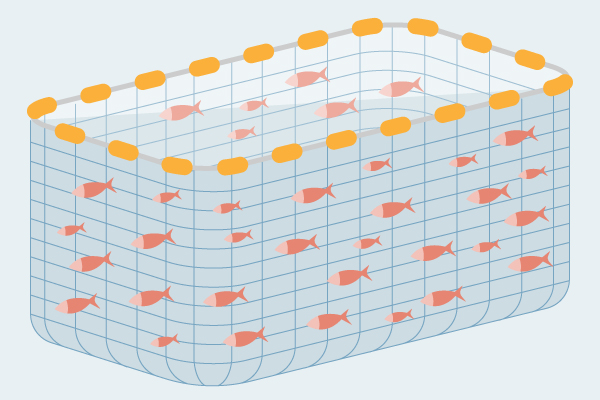
We provide premium red sea bream and yellowtail fry and supply them to producers throughout Ehime and Kyushu. These fry thrive in the warm Bungo Channel and quickly grow to adulthood in less than two years.
Formula Feed
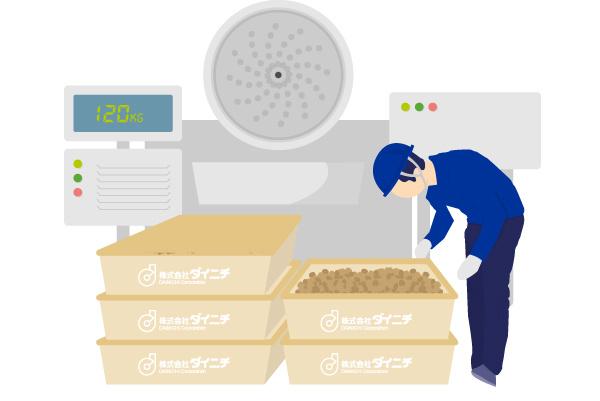
It is not an exaggeration to say that the quality of feed strongly determines the quality of fish. As a feed manufacturer, we use our feed formulation expertise and alongside the local producers to create exceptional fish.
Procurement of Fish
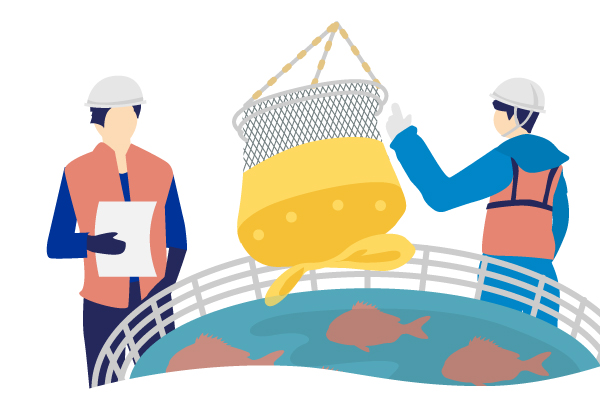
From the warm Bungo Channel, fish that were raised on our feed and the nurtured by producer’s care and affection are harvested and then transported to one of our three processing plants located in Ehime, Wakayama, and Tokyo. There they are kept alive until processing. Our red sea bream, bluefin tuna, and cherry salmon are farmed in-house.
Processing & Distribution

Harvested fish are promptly transported to our processing facilities in Wakayama and Tokyo for same-day or nationwide delivery the following day. Taking advantage of Kainan Seafood Center’s being strategically located only 30 minutes from the Kansai International Airport, we can easily cater to international markets. Our Ehime facility utilizes a patented technique to produce frozen products that maintain the same level of freshness as the day they were harvested.
At the Table
We deliver delicious fish to you table through a wide range of channels such as conveyor-belt sushi restaurants, restaurants, supermarkets, and fish markets.
